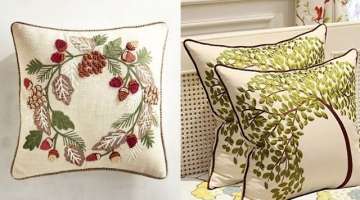This Colorful Pigeon With Luminous Feathers Is The Closest Living Relative To The Extinct Dodo Bird(video)
Have you ever heard of the Nicobar pigeon? It’s the closest living relative to the extinct flightless Dodo bird, and the colorful bird is absolutely stunning. Even though they’re relatives to this legendary extinct animal, The Nicobar pigeon looks nothing like the Dodo. One of their differences is Nicobar’s luminous colors. Meet The Closest Living Relative To The Extinct Dodo Bird With Incredibly Colorful Iridescent Feather.
- 1 | 8

Sometimes, the hustle and bustle of life make us forget that we live in an extraordinary world. There is beauty all around us, and it doesn't take much to find it. From the vibrant colors of flowers, the sun waking us up with its golden glow and warmth, the mesmerizing blue of the sky in the mornings, and sound of the ocean waves, nature has long proven its utter magnificence.
- 2 | 8

One example of a beautiful work of art found in nature is the Nicobar pigeon (Caloenas nicobarica). This creature is the closest living connection to the flightless Dodo bird, although they don't look alike. Image credits: Sue Demetriou
- 3 | 8

"The Dodo is an extinct flightless bird that was endemic to the island of Mauritius, east of Madagascar in the Indian Ocean. The first recorded mention of the dodo was by Dutch sailors in 1598. In the following years, the bird was hunted by sailors and invasive species, while its habitat was being destroyed. The last widely accepted sighting of a dodo was in 1662. Its extinction was not immediately noticed, and some considered it to be a mythical creature." [source: Wikipedia]
- 4 | 8

The Nicobar pigeon gleams with its distinct and luminous plumage that shimmers in blue, rust, red, copper, and green colors. Add to that its reddish legs and white tail. The bird developed this gorgeous coloring because of its isolated location on small islands. These areas lacked natural predators, so they didn't need to conceal themselves. Because of this, they were available to develop brilliant feathers. Image credits: Jim4496
- 5 | 8

The Nicobar pigeon primarily inhabits Southeast Asia areas, including Vietnam, the Philippines, the Solomon Islands, the Andaman and Nicobar Islands, where it was named after. Males are about 16 inches in size, with the females slightly smaller. They have a life span of 8 to 12 years in the wild and 10 to 15 years in captivity. Nicobar pigeons are monogamous and mate with one single partner for life. Unfortunately, these beautiful birds are considered Near Threatened. Their rapidly declining population could soon have the International Union for Conservation of Nature (IUCN) classifying them as Threatened. Their natural diet consists of fruit, seed, and buds. This pigeon has a gizzard stone to help them grind and digest hard foods (also known as stomach stone). While this feature is useful to these birds, it also makes them a hot target for hunters who kill them to retrieve the stones used in jewelry.
- 6 | 8

They're also hunted as a food source, which contributes to the decrease in their numbers. They're also being sought after as an exotic pet. Nicobar pigeons aren't available in the country and outside as an easily gained pet. They're listed on the Convention on International Trade in Endangered Species (CITES) as animals illegal to trade.
- 7 | 8

In an effort to save the Nicobar Pigeon population, several zoos around the world formed the Nicobar Pigeon Species Survival Plan. About 450 to 500 birds are housed in 55 institutions and are kept as "insurance" against extinction. It's also a formal breeding and transfer activity to train the birds to adapt and multiply in protected areas. Another formidable problem for the Nicobar is the declining availability of suitable habitats for nesting due to deforestation.
- 8 | 8

The release of non-native predators such as cats and rats in the islands also contributes to their population decline. These issues are also being taken into account in the training plan for birds. Nature has gifted us with beautiful creatures like the Nicobar Pigeon, and as stewards of the environment, it is our responsibility to protect them always. After all, they're our co-residents, and they have every right to live peacefully and thrive on this earth as much as we do. You can watch video below:



















